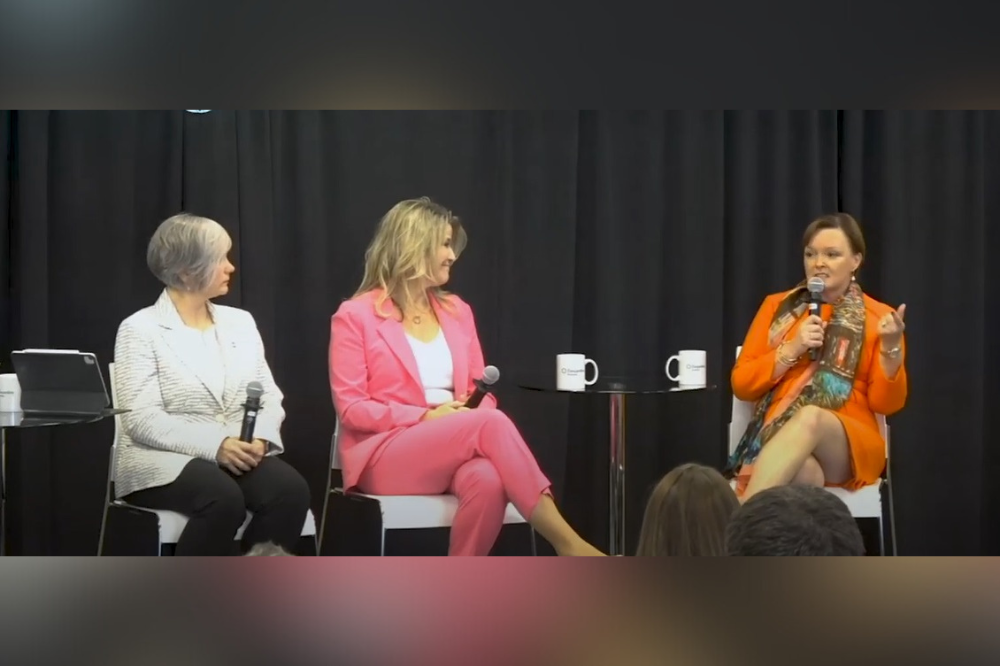Gender pay gap, imposter syndrome, diversity KPIs – what do top female insurance leaders think?

Gender pay gap, imposter syndrome, diversity KPIs – what do top female insurance leaders think? | Insurance Business Canada
Insurance News
Gender pay gap, imposter syndrome, diversity KPIs – what do top female insurance leaders think?
There’s more work to do…
Insurance News
By
Gia Snape
There’s more work to be done to make the insurance industry a gender-equitable and diverse place.
Top female insurance leaders in Canada gathered for an International Women’s Day panel arranged by Desjardins last week and agreed that insurance organizations can’t sit on their laurels.
Despite progress in getting more women into leadership roles, issues such as gender pay disparity, a lack of supportive workplace policies, and imposter syndrome remain a harsh reality for many.
“I’m frustrated by the continuing discussion about the structural issues that result in a pay gap between men and women,” said Tracy Garrad (pictured far right), president and CEO of Aviva Canada.
“We must constantly keep vigilant and have processes in place that ensure that we do genuinely have pay equity.”
“Nice girls don’t ask” – the link between the gender pay gap and imposter syndrome
For Garrad, one of the many reasons the gender pay gap persists is that women are less likely to ask for what they’re worth, whether it’s a salary increase, a promotion, or an important project.
“We need to give them the aspiration and tell them how good they are and that they deserve to ask, and we have to do the right thing even if they don’t,” Garrad said.
Jolee Crosby (pictured in the middle), CEO of reinsurance, Canada, and English Caribbean at Swiss Re, spoke about the impact of imposter syndrome on her career journey.
Crosby shifted from property and casualty (P&C) insurance to the life and health space, navigating a new market in an unfamiliar region.
“That was such a defining moment for me because I realized I wasn’t going to let fear dictate my life choices,” she reflected.
“It’s kind of scary though. It’s easier now that I’ve done it, and I’ve made so many cross-functional moves, but going across the world took me to a whole other level. You have to be comfortable being uncomfortable because you’re not going to know all the answers.
“For me, it opened up a world of opportunity because I wasn’t self-censoring myself.”
‘Beyond the KPIs’ of gender equality
Crosby also stressed the importance of using KPIs to track diversity and equity progress. However, she cautioned fellow insurance leaders against merely chasing targets.
“It was just a little over a year ago that I had to go to our external board [meeting] in Zurich,” said Crosby. “When I walked into that room, which has the most senior leaders at Swiss Re and external board members, I was the only woman in that room except for the note-taker.
“It made me realize all the good things that we’re doing. Now, if I walked into that room, there would be women in that room. But we should never be complacent.”
For Valérie Lavoie (pictured far left), president and COO of Desjardins, the pursuit of gender equality is more than meeting a KPI. She noted that the percentage of women in Canada’s workforce had increased from 76% to 86% in the last 30 years, which means organizations should work harder to ensure their growth and needs are supported.
“Gender equality is so much more than just hiring women to meet a target,” Lavoie said. “It’s what we have to do as an organization to foster a dynamic environment where the employees grow and develop their skills.”
Garrad also underscored the importance of supportive work environments for women and diverse individuals to thrive.
“Sometimes women, as much as they’ve got great potential, they might not have that confidence,” she said. “In promoting people and giving people stretch opportunities, we have to also give them the support frameworks to help ensure they succeed and not just leave them to sink or swim.”
What are your thoughts on the progress in gender equity and diversity in Canada’s insurance industry? Please comment below.
Related Stories
Keep up with the latest news and events
Join our mailing list, it’s free!






